For westerners, there are no animals more exotically Asian than elephants and monkeys. Usually only glimpsed behind thick glass or from a distance at some cheesy zoo, to be able to get up close and actually touch one of these beasts is a truly unique experience. This is why I was excited when a recent visit by my beloved family (hence my long online absence) allowed me to visit not one, but two animal sanctuaries where I could interact with monkeys and elephants in ways you normally can’t, and which I had never done despite being in Thailand nearly 15 years.
As we were hanging out on the beach down in Surat Thani province, our first stop was the Monkey Training College just outside of Surat Thani town. The school was started in the late 1950s by Khun Somporn Saekhow to train monkeys in the art of picking coconuts. Today it is run by Khun Somjai, Somporn’s daughter. This part of Thailand is where much of the country’s coconut supply comes from, and when you see just how tall a coconut tree is – perhaps 20 meters – it’s no wonder that your average Thai farmer doesn’t really want to spend his days climbing up to the top. Enter the monkey.
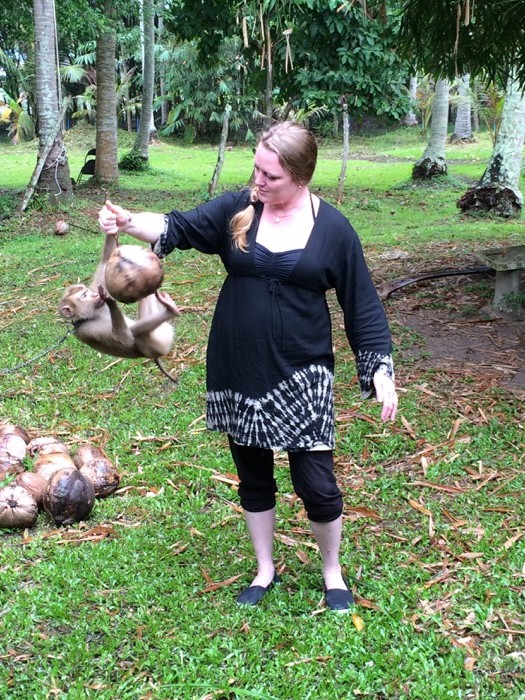
My sister playing the part of a tree while the monkey practices his coconut-gettin’ skillz.
Khun Somporn devised a way to train the monkeys to pick coconuts faster and with more precision than ever before. First, the monkey is taught to spin a coconut like a ball. Then, they’re taught to climb up a poll and spin a coconut that’s hanging by a string. Finally, they’re taught to climb to the top of a coconut tree and spin the coconut until the stem breaks, and it falls to the ground. Khun Somporn gained a good level of fame, and was sought out by those who wanted to improve the skills of their monkeys and, ultimately, the output of their coconut farms, and the monkey training school was born.
Khun Somjai gave us a funny and entertaining show explaining how they get them up to speed. We learned a few neat facts as well – for instance, at its peak, a well-trained monkey can pick up to 1,500 coconuts per day! And, over 600 people per year are killed by falling coconuts. The final part of the day saw a monkey dislodge three coconuts from the top of a very large tree, which we then cracked open to eat. Unsurprisingly, they were delicious. The cost for the whole program was 300 baht per person, well worth it.
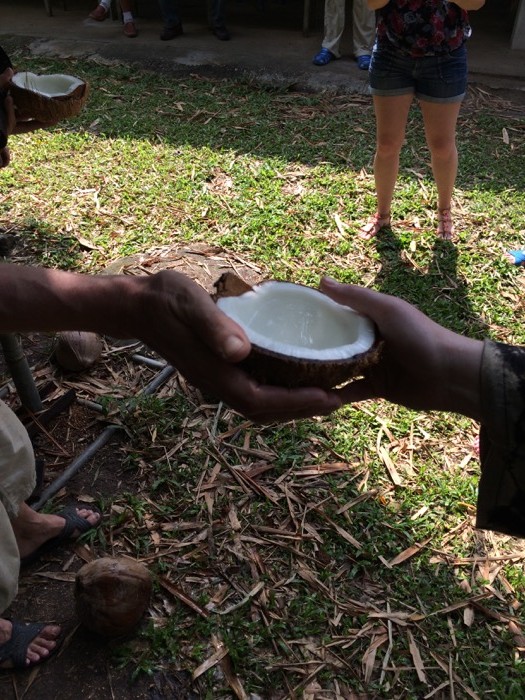
So good. So fresh. So going to be used for my coconut bikini.
A week later we headed up to Kanchanaburi to spend the day at Elephants World, a sanctuary for old, abused, abandoned, or unwanted elephants. The day program costs 2,000 baht and you’re basically put to work, but when you realize it’s all in the service of giving the elephants the care they need to thrive, it’s not an issue. Elephants World is run by volunteers, who break the day’s visitors into groups. Safety speeches and Q&A’s are gotten out of the way, and then we began. Gathering and cutting fruit, planting a few trees, and other general tasks are done in the morning. A delicious Thai buffet lunch is provided, and then you’re given free time to walk around and hang out with the elephants. Volunteers are always around to answer questions and make sure everything’s going okay.
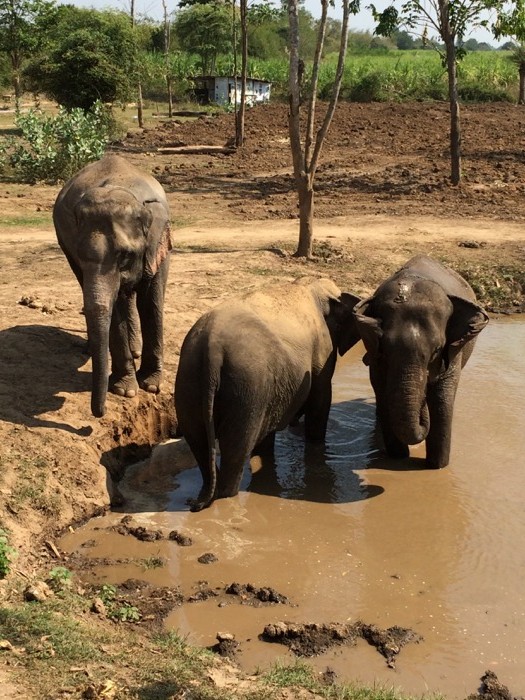
Happy as an elephant in mud.
We got up close with all of them – feeding them fruit and vitamin-laced oatmeal, rubbing their ears, and being careful not to get stepped on. Interesting facts I learned – some elephants are super fussy and won’t eat food unless it’s just the right temperature/consistency/type, and they “purr” when they’re content and relaxed. Like a kitten but, you know, mega-huge.
The highlight of the day was undoubtedly in the afternoon, when we marched the elephants down the river for a bath. Chest-deep in the River Kwai, using a brush to scrub down an elephant is an amazing place to be. They’re clearly enjoying it – playing with the water, sitting down, shaking their heads, and dunking their riders underwater (if you’re able to climb up on their neck, that is). The only thing I didn’t like about the whole experience is the giant balls of elephant poo that would sometimes float to the surface, which I worked hard to avoid.
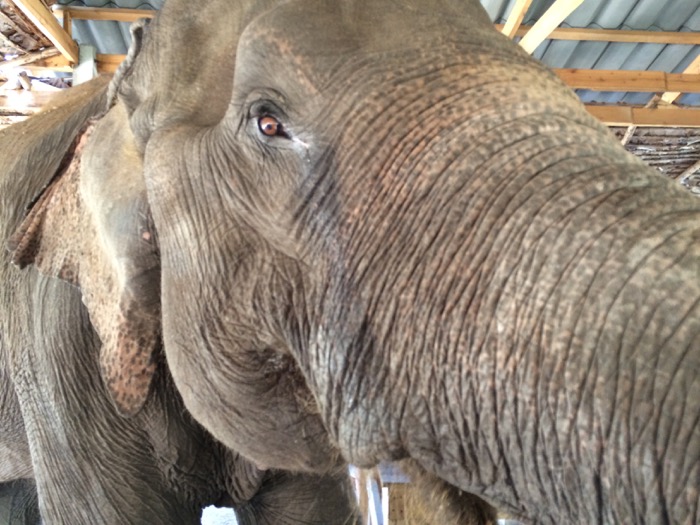
“Hey. Hey buddy. You got more food?”
Both of these animal destinations were a fantastic way to experience two of Thailand’s most common animal icons up close, and both were for a good cause. Highly recommended for visitors, and even for jaded expats like myself.
Click on the gallery to see more pictures.
- My sister playing the part of a tree while the monkey practices his coconut-gettin’ skillz.
- What happens when a monkey gets tangled 20m up a tree? Luckily they’re trained to handle that. We were asked to make large, complicated knots, but none posed any challenge for the monkeys.
- How do you transport a monkey around? On the back of your bike or motorbike, another thing they’re trained to do. Only horses and elephants are dumb enough to walk.
- That’s a long way up.
- Delicious.
- My sister and her best friend, an 85-year old blind guy who purred like a kitten when you hugged him.
- “Hey. Hey buddy. You got more food?”
- One of the less-fun things about spending time with elephants. Don’t wear flip-flops.
- Getting the food ready.
- Happy as an elephant in mud.
- Just before 7 of his giant buddies and us puny humans took a bath together.



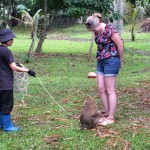
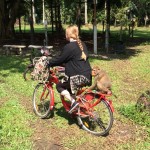
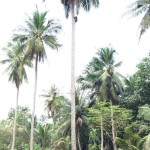
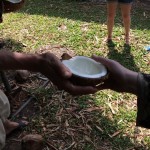

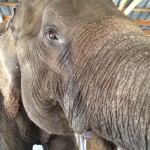
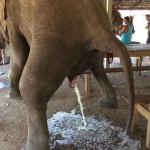
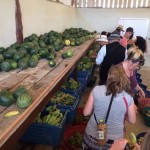
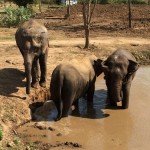
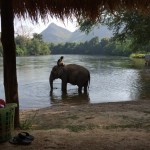
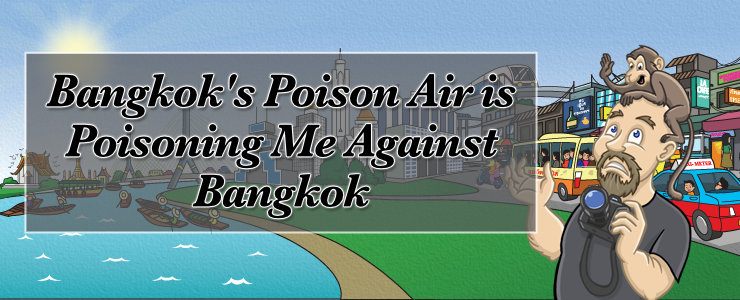


Absolutely fabulous! So glad you all have this genuine loving experience!
Thanks Marlee, highly recommended!